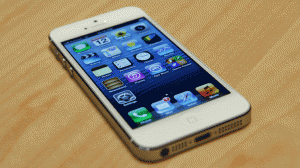 Crime on the whole may be down 62 per cent from its peak in 1995, but the number of mobile phone thefts remains a concern in England and Wales.
Crime on the whole may be down 62 per cent from its peak in 1995, but the number of mobile phone thefts remains a concern in England and Wales.
According to the Crime Survey 742,000 mobile phones were stolen in 2012/13, with nearly 100,000 thefts in London alone.
The Home Office report on “Reducing Mobile Phone Theft and Improving Security” found that majority of mobile phone thefts have been in crimes against individuals as opposed to households, e.g burglaries.
OUT OF SIGHT
Majority of mobile phone thefts happen when handsets are left unattended in public places, whilst pick pocketing and snatching also account for a high number of thefts.
Mobile phones are becoming more and more sophisticated and smart phones now allow us to store personal and financial data which is in some cases more valuable to thieves than the actual phone itself.
“Mobiles are no longer just phones: they are becoming our wallets and gateways to many services,” reads the report.
MORE MOBILE PHONE USERS
The number of mobile phone owners has increased from 39.3million in 2005/06 (74% of the population) to 45.5million (81%) in 2012/13.
Women are particularly vulnerable to having their mobile phones stolen; it is believed that this is as a result of women carrying their handsets in handbags.
In terms of age group 14-24 year-olds are most likely to be victims of this crime.
TARGETED VICTIMS
The report says that “most phones were stolen in circumstances in which the offender could target a particular victim, and a particular phone.”
Smart phones are at a greater risk than older handsets, with research carried out in 2011 by the Lifestyle Group suggesting that consumers valued the personal data on smart phones at an average of £760. This figure doesn’t include apps and music which are largely recoverable.
iPhones are most likely to be targeted, this could be down to two reasons. One is the desirability of the Apple handsets, the other is that the more vulnerable groups to theft (young people) are more likely to own an iPhone.
IMPROVED SECURITY
The report does suggest that improvement in security has seen a drop in not only the black market value of the phones but also the number of thefts.
Introduction of Apple’s latest operating system iOS7 has seen a marked reduction in thefts, with its updated security features. Other manufacturers have also introduced new security features such as Samsung’s Reactivation Lock and Find My Mobile, which enables you to track your device if it has been stolen.
The Home Office report concludes “that security improvements made by the mobile phone industry have had an impact, and we hope the industry continues to use its inventiveness and skill to make their products ever more secure.”
HOW TO PROTECT YOUR PHONE
Actions that you can take to protect your phone is to use a PIN lock to protect the data and prevent use of your phone in the event that it is stolen, don’t leave your handset unattended in public places, install a tracker/security app – if it is stolen it will enable the police to track it down.
If it is stolen immediately contact your network and report it to the police, and give them the IMEI number.
Mobile handsets most likely to be stolen
Apple phones account for 40 per cent of mobile handsets stolen between August 2012 and January 2014. Here’s a list of the 20 mobile phone models most likely to be stolen according to the Home Office.
- Apple iPhone 5
- Apple iPhone 5C
- Apple iPhone 5S
- Apple iPhone 4S
- Blackberry 9790
- Samsung Galaxy S4
- Samsung Galaxy S3
- Blackberry 8520
- Blackberry Z10
- HTC One X
- Apple iPhone 4
- Blackberry 3G
- HTC One
- Blackberry 9900
- Samsung Galaxy Note
- HTC One S
- Samsung Galaxy S2
- Samsung Galaxy S
- Samsung Galaxy Mini
